Themed collection Molecular Containers

Molecular containers
Guest editors Pablo Ballester, Makoto Fujita and Julius Rebek, Jr. introduce the Molecular Containers issue of Chemical Society Reviews.

Chem. Soc. Rev., 2015,44, 392-393
https://doi.org/10.1039/C4CS90101K
Transition metal catalysis in confined spaces
This review discusses different strategies to provide transition metal catalysts with a second coordination sphere and the effect this has in catalysis.
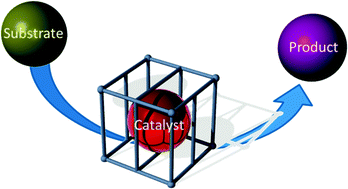
Chem. Soc. Rev., 2015,44, 433-448
https://doi.org/10.1039/C4CS00192C
Biomimetic cavity-based metal complexes
The biomimetic association of a metal ion with a cavity allows selective recognition, unusual redox properties and new reactivity patterns.
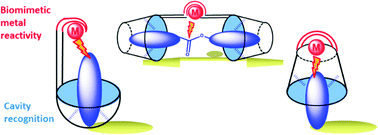
Chem. Soc. Rev., 2015,44, 467-489
https://doi.org/10.1039/C4CS00211C
Cucurbiturils: from synthesis to high-affinity binding and catalysis
Major developments in the synthesis of cucurbiturils and applications related to their high-affinity binding and catalysis have recently taken place.
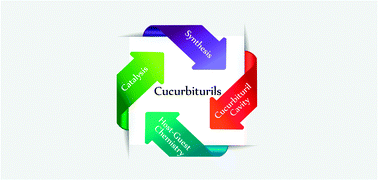
Chem. Soc. Rev., 2015,44, 394-418
https://doi.org/10.1039/C4CS00273C
Diffusion NMR of molecular cages and capsules
The applications of diffusion NMR and DOSY in the field of molecular capsules and cages are reviewed focusing on the added value of using these methods when studying such systems in solution.
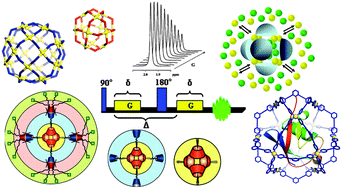
Chem. Soc. Rev., 2015,44, 586-602
https://doi.org/10.1039/C4CS00197D
Molecular containers assembled through the hydrophobic effect
This review focuses on molecular containers formed by assembly processes driven by the hydrophobic effect, and summarizes the progress made in the field over the last ten years.
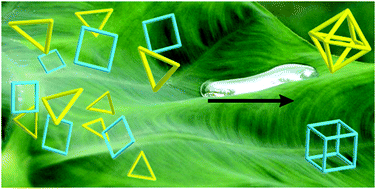
Chem. Soc. Rev., 2015,44, 547-585
https://doi.org/10.1039/C4CS00191E
Molecular containers in complex chemical systems
This review discusses recent advances in the use of molecular containers in complex chemical systems, focusing on three aspects: host–guest behaviour, structural transformations and reactivity modulation.
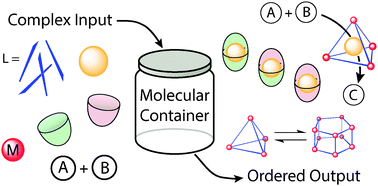
Chem. Soc. Rev., 2015,44, 419-432
https://doi.org/10.1039/C4CS00165F
Calix[4]pyrroles: versatile molecular containers with ion transport, recognition, and molecular switching functions
Calix[4]pyrroles function as “molecular containers” as illustrated by their ability to act as carriers for the through-membrane transport of ions and as “monomers” in the construction of aggregated supramolecular constructs.
![Graphical abstract: Calix[4]pyrroles: versatile molecular containers with ion transport, recognition, and molecular switching functions](/en/Image/Get?imageInfo.ImageType=GA&imageInfo.ImageIdentifier.ManuscriptID=C4CS00157E&imageInfo.ImageIdentifier.Year=2015)
Chem. Soc. Rev., 2015,44, 532-546
https://doi.org/10.1039/C4CS00157E
Gas-phase chemistry of molecular containers
The use of mass spectrometry for the investigation of supramolecular capsules and containers in solution and the gas-phase is reviewed.
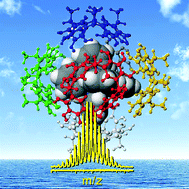
Chem. Soc. Rev., 2015,44, 515-531
https://doi.org/10.1039/C4CS00167B
Self-assembled capsules based on tetrafunctionalized calix[4]resorcinarene cavitands
The hemispherical structures of calix[4]resorcinarene cavitands are suitable for forming capsular assemblies with guest encapsulations through various intermolecular interactions.
![Graphical abstract: Self-assembled capsules based on tetrafunctionalized calix[4]resorcinarene cavitands](/en/Image/Get?imageInfo.ImageType=GA&imageInfo.ImageIdentifier.ManuscriptID=C4CS00153B&imageInfo.ImageIdentifier.Year=2015)
Chem. Soc. Rev., 2015,44, 449-466
https://doi.org/10.1039/C4CS00153B
Gated molecular baskets
The process of molecular gating is important for controlling the trafficking of guests to and from artificial molecular capsules.

Chem. Soc. Rev., 2015,44, 500-514
https://doi.org/10.1039/C4CS00140K
Soft templates in encapsulation complexes
The ethanolamide of arachidonic acid (anandamide) nucleates the assembly of a capsule incorporating 8 spacer units.

Chem. Soc. Rev., 2015,44, 490-499
https://doi.org/10.1039/C4CS00065J
About this collection
This Chemical Society Reviews themed issue on molecular containers, guest edited by Pablo Ballester, Makoto Fujita and Julius Rebek, relates the behavior of molecules in small spaces. The spaces are provided by synthetic containers – cavitands, capsules, synthetic receptors, etc. – that fold around their target guests, isolate them from the bulk solvent, provide a hydrophobic environment and present the guests to each other in the limited space. New articles will be added to this collection as they are published.